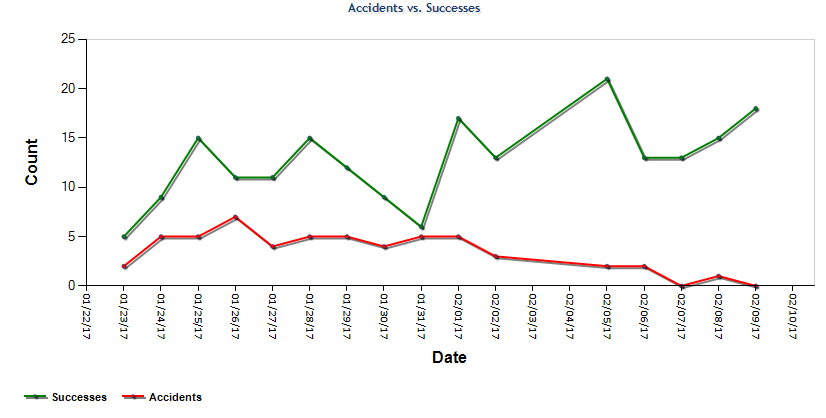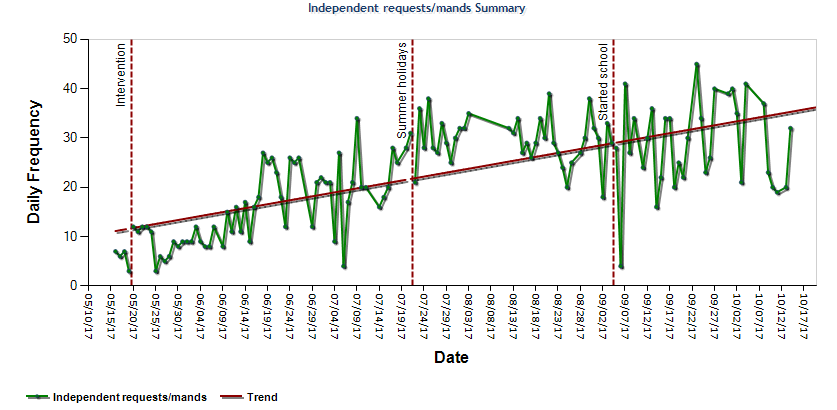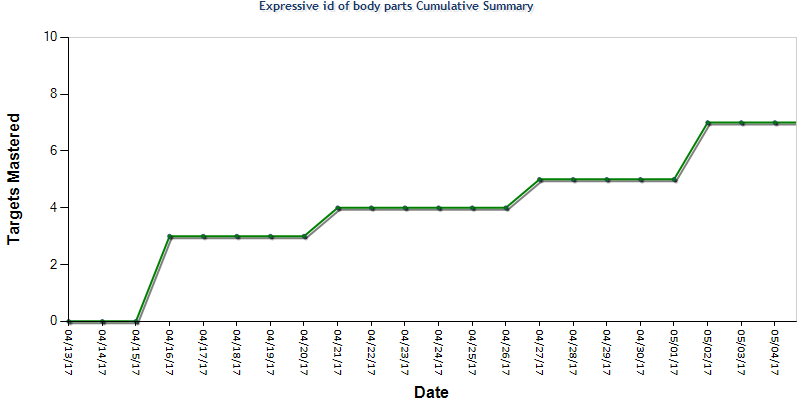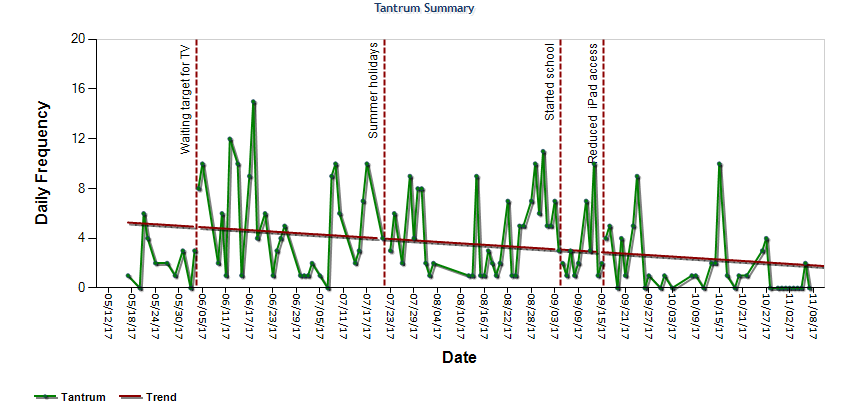It’s been just over a year since we launched our online ABA service, Pathfinder. It has certainly given me a new perspective as an ABA Consultant. For over 10 years I had worked directly with children and young people with a diagnosis of ASD in their homes, schools, nurseries, and the community; starting this online service meant a move to working directly with parents.
With one year down it is a good time to look back on what we have learned, how the service has grown and how it has helped families who may have otherwise been priced out of therapy
How it all started
Our experience told us that accessing ABA services was a problem for a lot of families. Issues with cost and availability meant that ABA was all too often out of reach.
We felt technology could address both these issues while supporting parents and carers in gaining the skills needed to apply ABA themselves.
We decided to deliver the service online. To build a service which would match the needs of parents and carers involved a lot of planning and collaboration with parents, other ABA professionals and IT personnel, which we did before launching the service last year.
Initially we focused on putting together a comprehensive online assessment that would allow parents to input information about their child across a range of relevant areas including communication, play, social and leisure skills, challenging behaviours and everyday routines.
The assessment is the foundation of the child’s personalised programme and therefore it needed to cover an extensive range of areas.
We also wanted to help parents better understand ABA theory, by breaking down some of the terminology and reviewing principles and procedures in an accessible way. To do this we created seven online modules, each of which was designed to give parents an easy to digest, self-paced look at the most important aspects of behavioural principles and intervention.
Following completion of these we piloted the service with a handful of families. Working with these parents gave us a valuable insight into how the service worked in ‘real life’. It took several months to create ABA Pathfinder but it was important for us that the service would be effective, affordable and easy to use.
A different approach
Once we launched the service it soon became clear that working with families and directly with parents would allow me to become a better practitioner. I now have greater understanding of how the entire family is affected by the needs of the children we work with. I better understand how the needs of the family must be prioritised when developing personalised plans.
The positive effects of a good programme can extend beyond child behaviours. I have seen how it can impact parents and families through increased confidence and reduced stress. I also appreciate better how busy families are! My experience with ABA Pathfinder has shown me that supporting the child means working closely with parents to identify targets that are achievable and, importantly, realistic.
How it works
An online service meant that parents anywhere in the UK could access ABA provision and do so in an affordable way. However, as with any new service parents had questions: “How would it work?” “Will my child make progress?” “Will I have the time to teach as well as parent?”
Certainly parents need to have time and energy to participate in the training and their child’s learning. However, it is not about putting in place a 30 hour a week programme. The number of hours is neither as important as what is accomplished during those hours, nor as important as identifying the right teaching for their child. We focus on how teaching can be embedded and worked into the everyday family routine.
For example, if a parent was working on increasing communication skills, they could set up ‘communication temptations’ in everyday routines like snack and meal times. So rather than giving the child all their food at once, a parent could provide them with a couple bites of preferred foods. When the child shows that he wants more, the parent can then model the way to ask for it. This helps to increase communication requests in a natural way.
Parents have first hand knowledge of their children’s experiences and their insights allow us to better understand the strengths and needs of their child. With each initial assessment we identify the unique and individual needs of each family.
This is why the assessment and intervention process is collaborative. Parents work with us to develop the most appropriate goals and intervention plans for their child. They are then supported in using individualised intervention practices with their child to help them acquire/increase skills and/or decrease any interfering behaviours that impact on learning or daily functioning.
We discuss programme targets and problem solve issues as they arise through regular skype calls. In between skype calls parents can send updates and videos via our simple to use data collection app and email. The eLearning modules also allow parents to refer back to relevant content and theory as required.
Who we support
Currently we work with parents of children aged between 2-10 years. Some of these children have a diagnosis of ASD and others present with communication, social and/or behavioural difficulties. Some families have tutors in place with whom we work to ensure consistent implementation of teaching and behaviour reduction strategies.
Programme targets for each child we support can vary. Some parents may work on a comprehensive programme addressing a range of goals and challenging behaviours and others work on a more focused approach. A comprehensive programme will work on helping a child acquire or strengthen developmentally appropriate social skills, self-help skills, language and communication skills and reducing disruptive behaviours.
With a focused approach we address a limited number of targets that are most relevant to the child e.g. toilet training, developing play skills, improving communication skills.
Ultimately we focus on skills that are fundamental to increase independence and a better quality of life.
These goals and intervention practices will often change over time to fit the changing needs of the child, parents, and family. Once parents have completed the steps of the process and have successfully implemented intervention practices with their child, other behaviours can be targeted and interventions taught. Together we work towards generalisation of the desired skills in multiple environments.
Whilst an online ABA service is not the right fit for every family, it does provide an alternative option for many parents.
The data below shows a sample of the targets that we have worked on with some of our ABA Pathfinder parents and their children.
Case examples
3- year-old boy with a diagnosis of ASD
Target: Toilet training programme
This data demonstrates the effects of a schedule based toilet training programme put in place by this young boy’s parents. Across a three-week period, his frequency of successes significantly increased with a reduction in accidents to near zero levels by the end of the third week. Throughout the day at specific time intervals, he was prompted to go to the toilet. Each success resulted in huge praise and reinforcement. The time intervals were gradually increased as he had more successes and fewer accidents. As the training progressed he began to independently identify when he needed to go to the toilet, initiating requests himself. The schedule based training was gradually faded and reinforcement was then provided for independent toileting requests and successful voids on the toilet.

4-year-old boy with a language delay
Target: To increase his frequency of independent requests throughout the day
The data shows an increasing trend in independent requests across a 4-month period. His parents worked on capturing and contriving communication opportunities at home and in the community to increase his motivation to communicate his needs and desires in a functional way. They created an environment conducive for communication. For example they ensured that preferred toys and foods were not easily accessible, encouraging him to use language to request them. They identified what motivated him and used these interests to help him communicate.

3-year-old boy with a diagnosis of autism
Target: To expressively identify body parts
Before starting this programme, this young boy could correctly label three different body parts. Using a combination of discrete trial teaching (DTT) and natural environmental teaching (NET) this parent taught her son to correctly label an additional seven body parts across a three week period.

4-year-old boy with a language delay
Target: To reduce the frequency of tantrums
There were a few triggers to this young boy’s tantrum behaviour including waiting in particular contexts and trying to access preferred items like the TV and iPad. In an effort to reduce these tantrums, his parents put in place a waiting programme and reduced his high level of access to the iPad. Whilst the data shows a variable trend in the occurrence of tantrums for the first few months, there has been a reduction in tantrums in the past month.
The waiting programme involved setting up situations at home where he had to wait before accessing a preferred item or activity. They began with short waiting intervals of 10 seconds to help him contact success. Waiting was paired with a visual timer and wait visual to help him understand how long he needed to wait. Reinforcement was provided for successful waiting and the length of the intervals were systematically increased overtime. The parents consistent implementation of the waiting programme resulted in him being able to wait for up to two minutes to access highly preferred items in the absence of any tantrum behaviour.
The data above provides a snapshot of the targets that a few of our Pathfinder parents have been working on. Their motivation and dedication to help their children learn, combined with their consistent implementation of programme guidelines and recommendations has led to positive gains in their children’s lives.
Essentially it highlights the significant impact parents can have on their child’s learning and I have seen how they can be such an effective and enduring influence on their child. Whilst I have always known the importance of parent training and involvement, I now realise how vital it is for a child’s progress.
Parent training provides continual opportunities for a child’s learning in a range of situations, promotes consistent management of behaviours and is imperative to the generalisation of skills. Parents are experts on their children. They are the first and most important teachers so incorporating parental expertise into our programmes is necessary for achieving better outcomes.
It has been a good year for our online ABA service and a lot has been learned and achieved. Our ABA Pathfinder parents have also reported positively on their experiences:
“To be able to access advice and knowledge and implement strategies and also to be able to share watershed moments that to most people are trivial has helped us immensely as a family”
“We have made masses of progress with our son’s communication and behavioural difficulties this past year”
We look forward to putting ABA provision within reach of more families in the coming year.
If you would like to know anymore about ABA Pathfinder, then please click on the following link to find out more: https://beamaba.com/our-services/online-aba-programmes/












